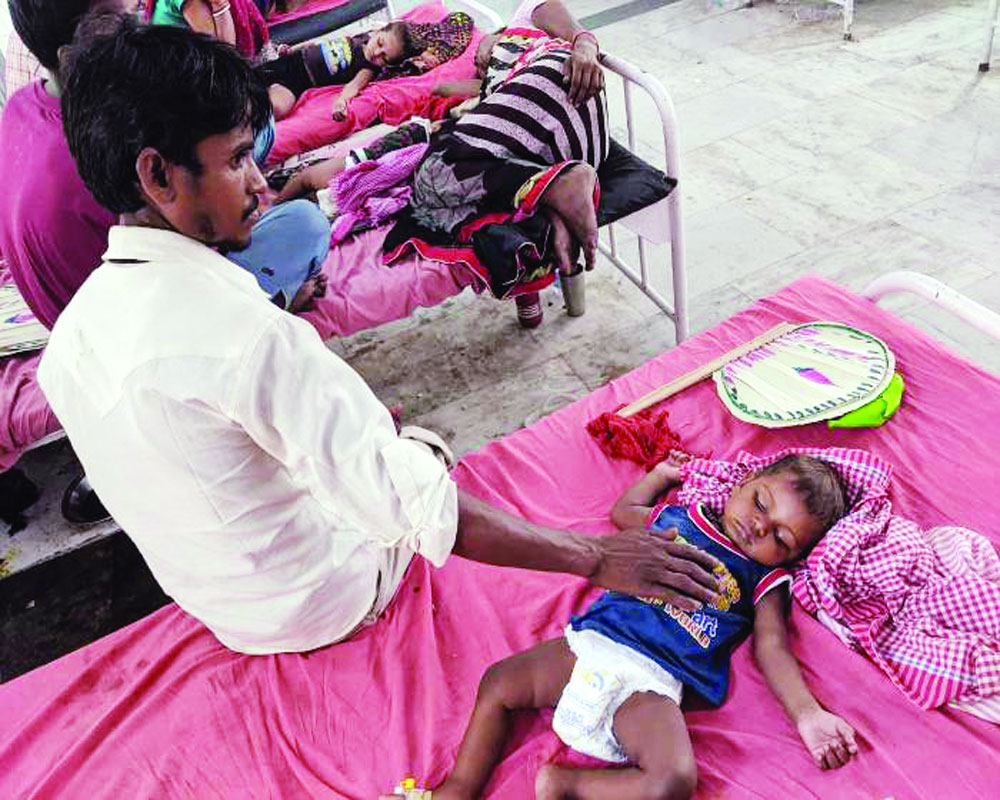Bihar’s AES deaths are symptomatic of policy apathy towards public health standards and failure to create awareness
The real headline behind the death of over a hundred children in Bihar’s Muzaffarpur is the utter lack of priority towards addressing primary health issues in a backward pocket that is living in denial of itself and the ruling class denies it even exists. So disembodied has reality become from our national narrative that losing a hundred young lives was disgustingly set aside by the Bihar Health Minister during a containment strategy meeting in favour of statistics of an ongoing cricket match. And that reality is of encephalitis assuming epidemic proportions in the dust bowls of Bihar and Uttar Pradesh every season, both of which serially account for 35 per cent of child deaths in the country. The disease is just the manifestation of a chronic illness called malnutrition and low immunity, which makes the locals vulnerable to outbreak of brain fever, particularly the young and the old. The fact that this has been occurring cyclically since the mid-1990s shows how we have grossly misdiagnosed preventive and primary healthcare in the rural hinterland and failed to communicate combat strategies among the community. Had the children been given proper vaccines, had they access to equipped primary health centres and received first-line treatment, the deaths could have been avoided. Had there been proper awareness campaigns, then it would be found that neither encephalitis nor deadly litchi toxins from neighbouring fruit farms or hypoglycemia were the cause of the deaths. However, each worked together in varying degrees to exacerbate a malaise called collective apathy, covered up as a “mystery disease.”
The biggest problem is in defining the malady. Any brain disease, brought on by virus, bacteria, parasites, chemicals or toxins can be defined as acute encephalitis syndrome, which basically manifests as inflammation of the brain. One has to isolate the causative variants, which could differ on a case by case basis. And as studies conducted by the National Centre for Disease Control (NCDC) and the Atlanta-based Center for Disease Control (CDC) over the past few years have shown, the fever strikes when there is a severe heat wave. This leads to severe dehydration, worsening attendant problems relating to under-nourishment. Besides, most victims have been found to work or live near litchi cultivations, consumption of which some say has led to dipping blood sugar levels and hypoglycemia. But experts have found that malnourished children, who ate litchis and went to sleep without a meal, fell ill, particularly during the high heat of summer. And methylene cyclopropyl-glycine (MCPG) found in litchis only affects the brain in severely malnourished victims. So generalising litchi as a toxin and other such confusing theories are deflecting attention from the Bihar government’s abject failure in implementing public health correctives and developing resistance to a known health hazard. Early detection and treatment is a near impossibility in these parts with the nearest health centres sometimes eight hours away. That wait gets longer if the health centre is not equipped enough with either trained staff or intravenous glucose drips and the victim has to be taken to a State hospital. And although the Bihar government has mandated availability of free vaccines at all primary health centres, the execution is yet to be a hundred per cent. Little wonder then that with such glaring lacuna in crisis response, the National Human Rights Commission (NHRC) has sent notices to the Union Health Ministry and Bihar government over the Muzaffarpur deaths. There is a need for ensuring basic hygiene, health and nutrition parameters for our children, who are the social and human capital of the future. As an Asian powerhouse that’s looking to consolidate its economic and strategic standards, it is shocking that India continues to be among the topmost countries with the largest number of children being stunted (46.6 million) and wasted (25.5 million). This is despite the fact that children’s health has been the Government’s priority since 1975, when the Integrated Child Development Services (ICDS) scheme was rolled out, or 1995, when the mid-day meal scheme was launched nationally. The recent National Nutrition Strategy, too, aims to end malnutrition by 2022. It is expected to synergise efforts, monitor progress and issue alerts for timely action and help States/UTs achieve targetted goals. But all of this is possible only when there are resources. In short, budgetary allocation for the health sector needs a thorough relook.


























